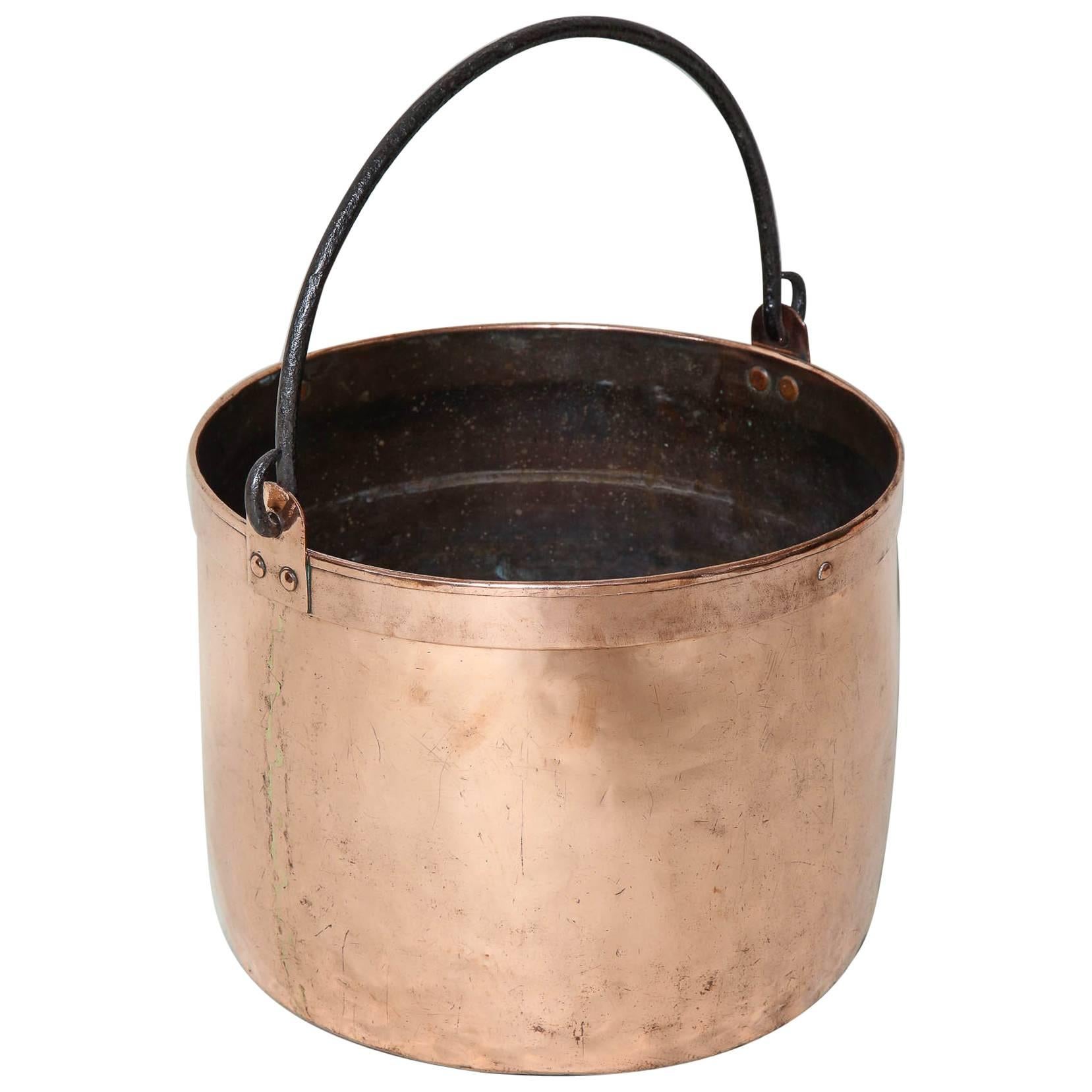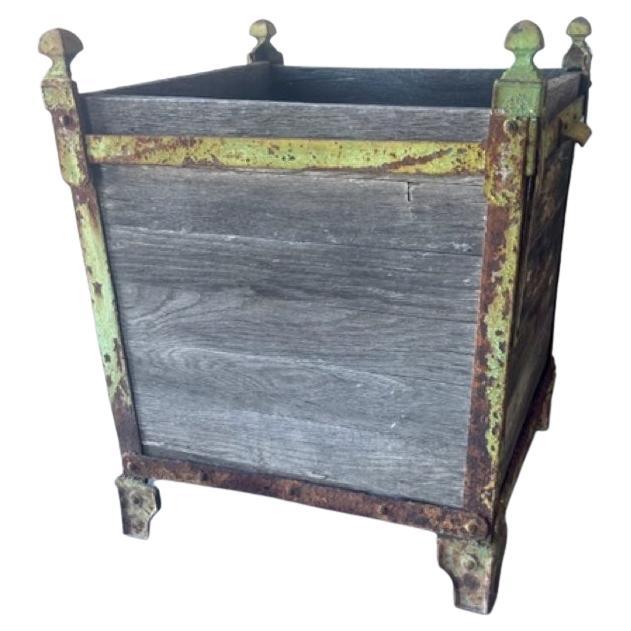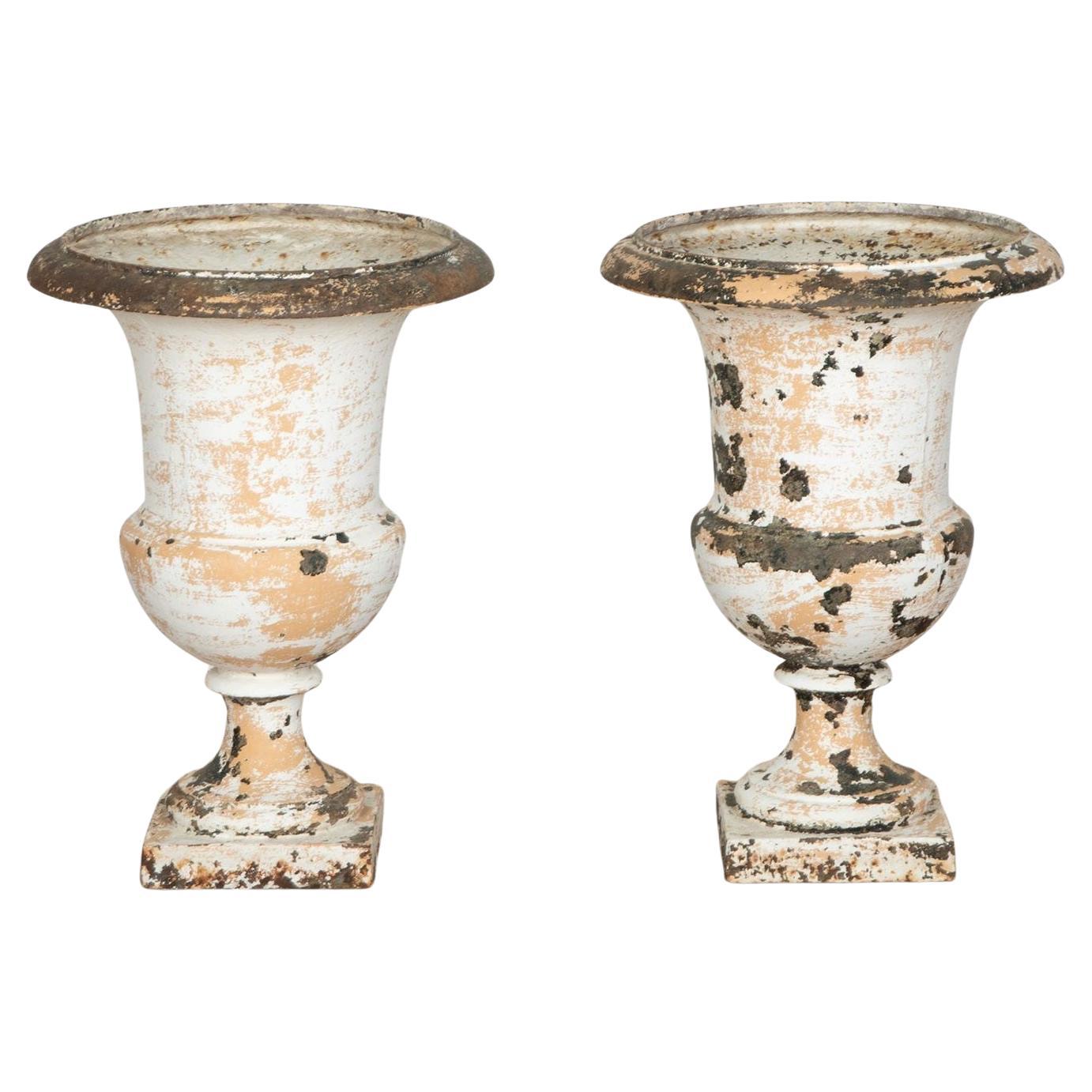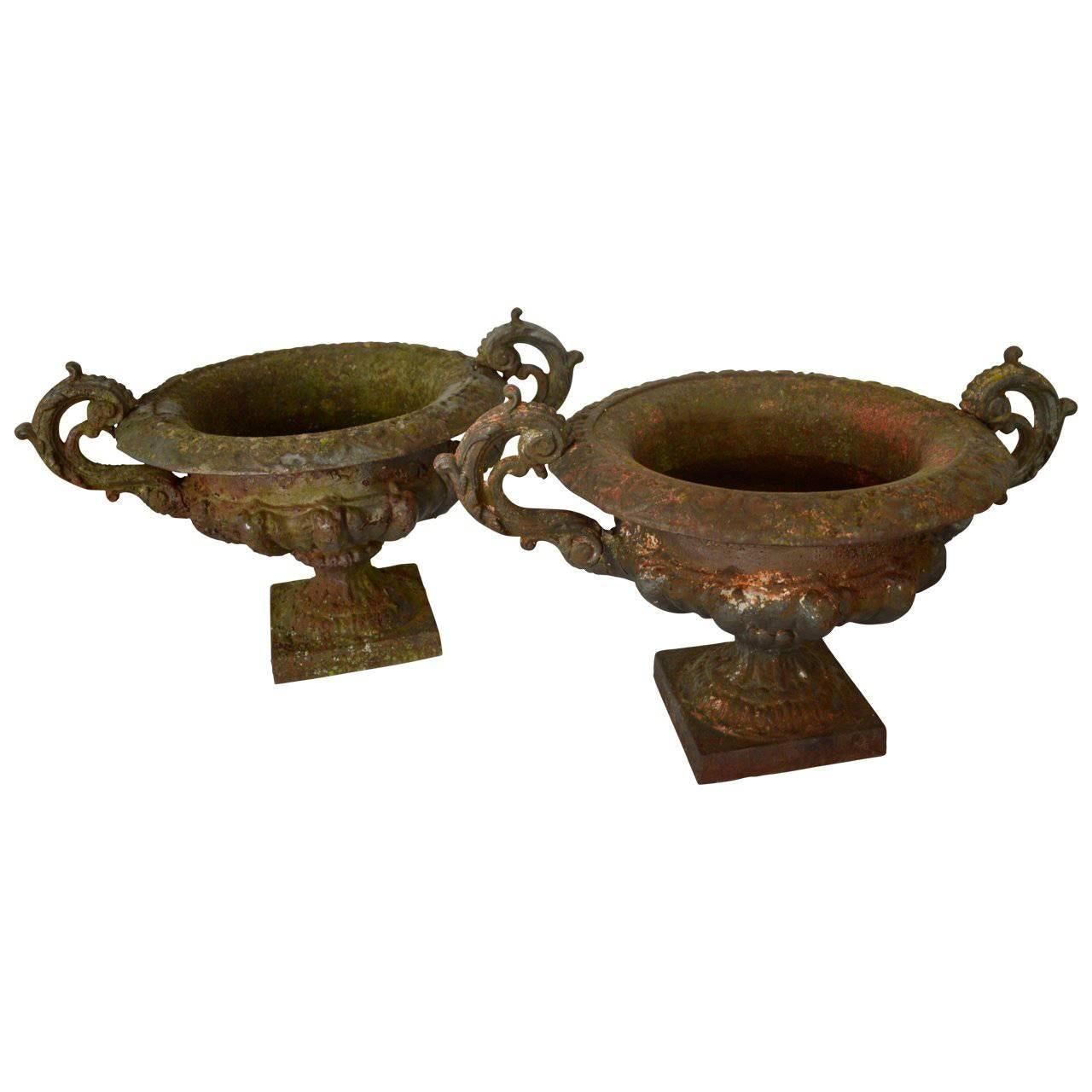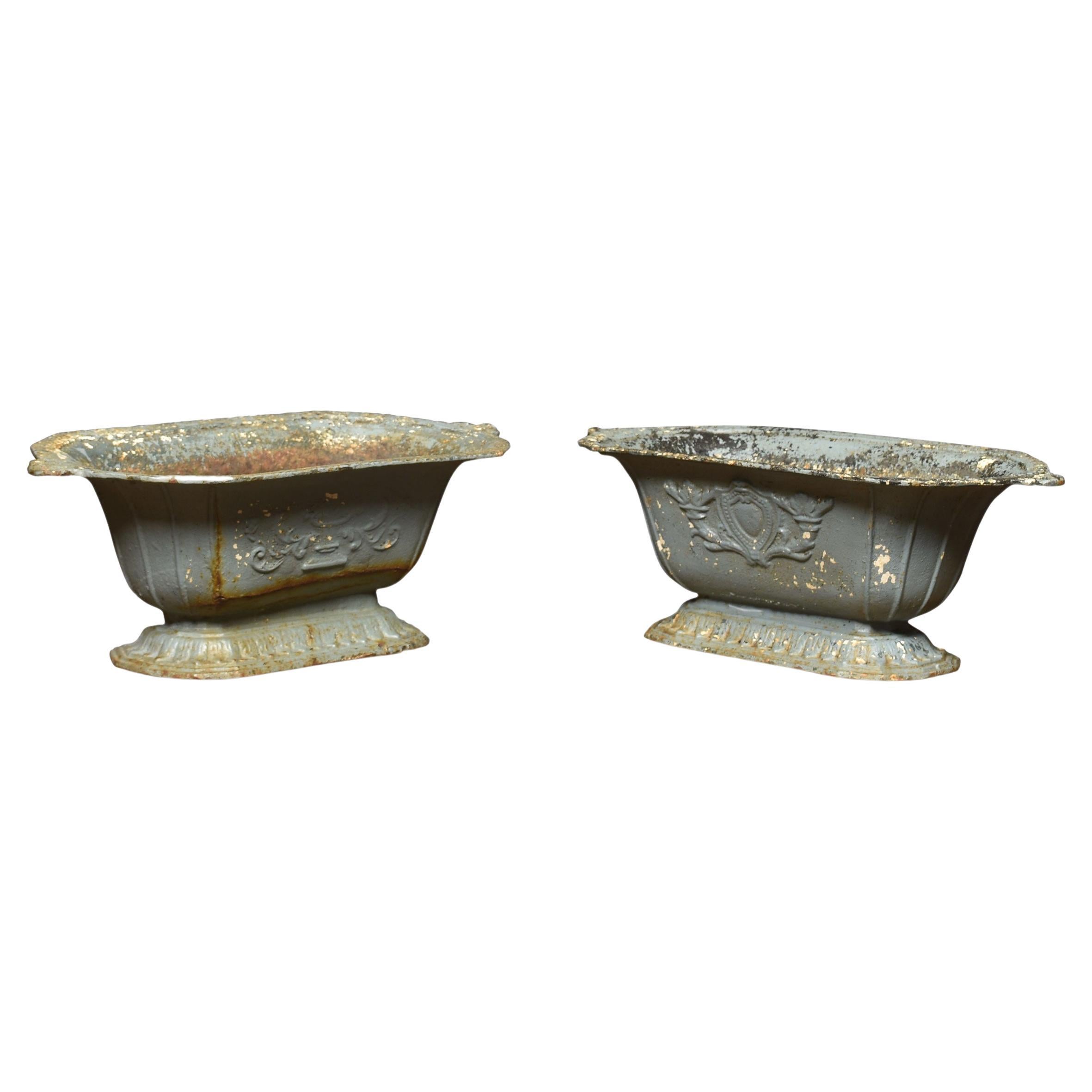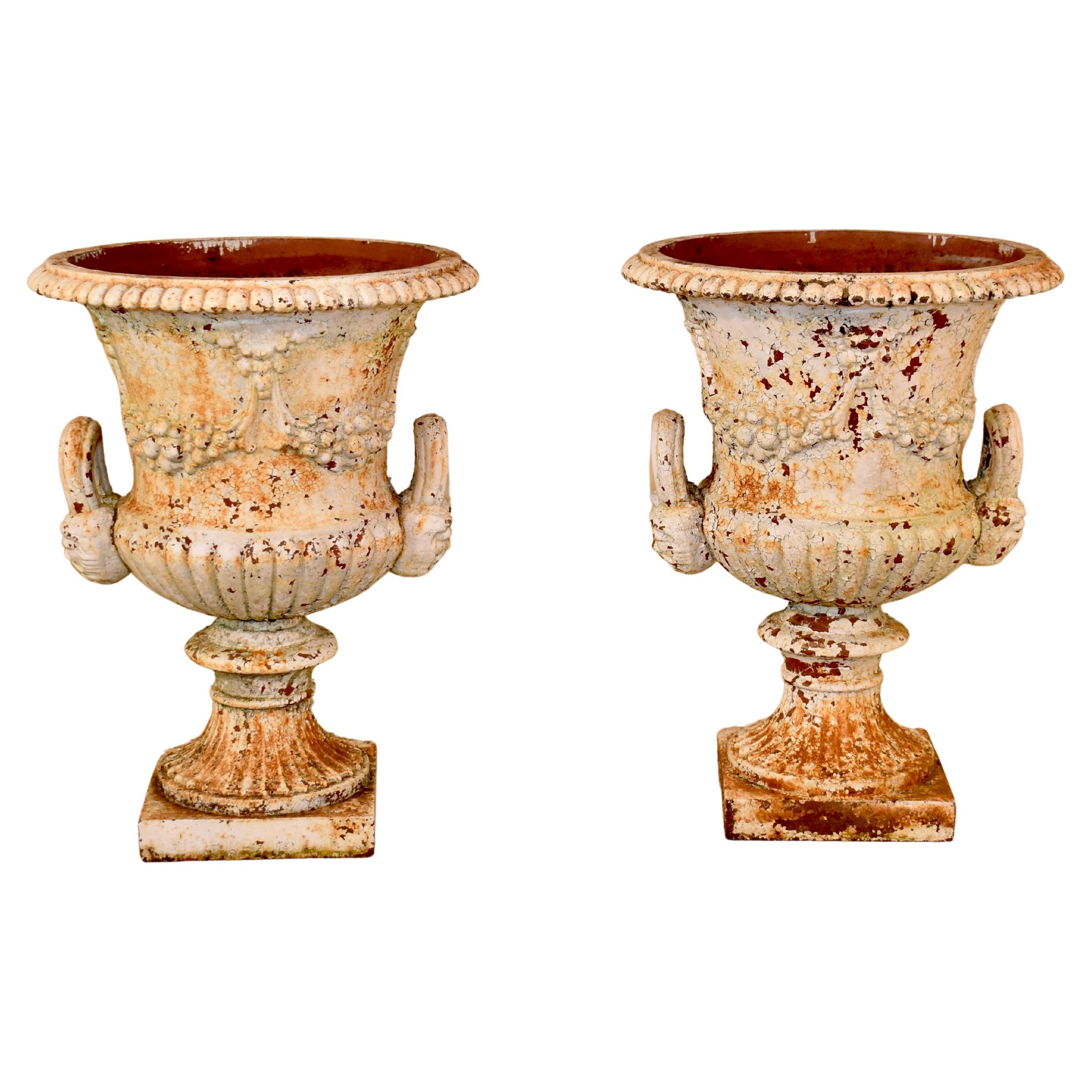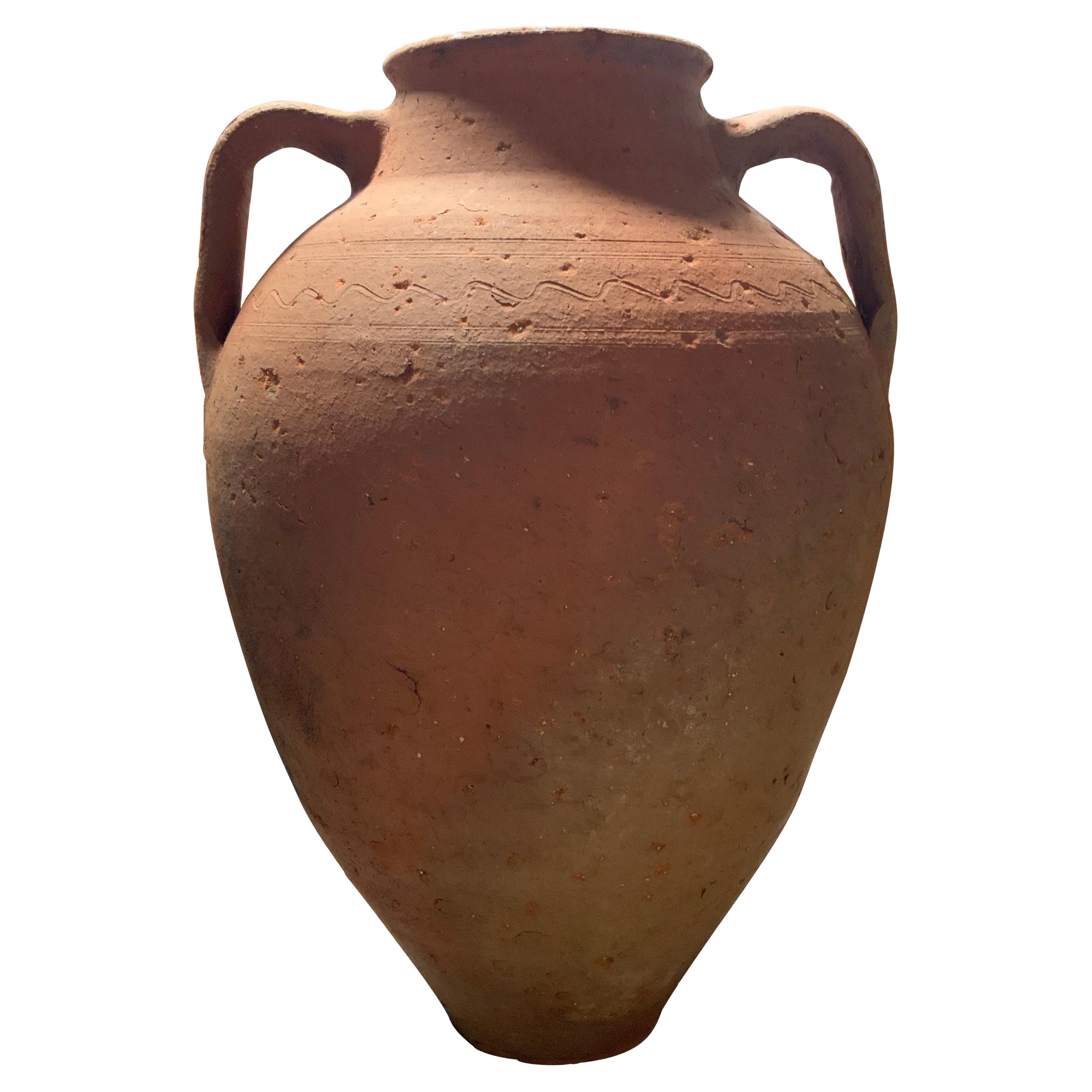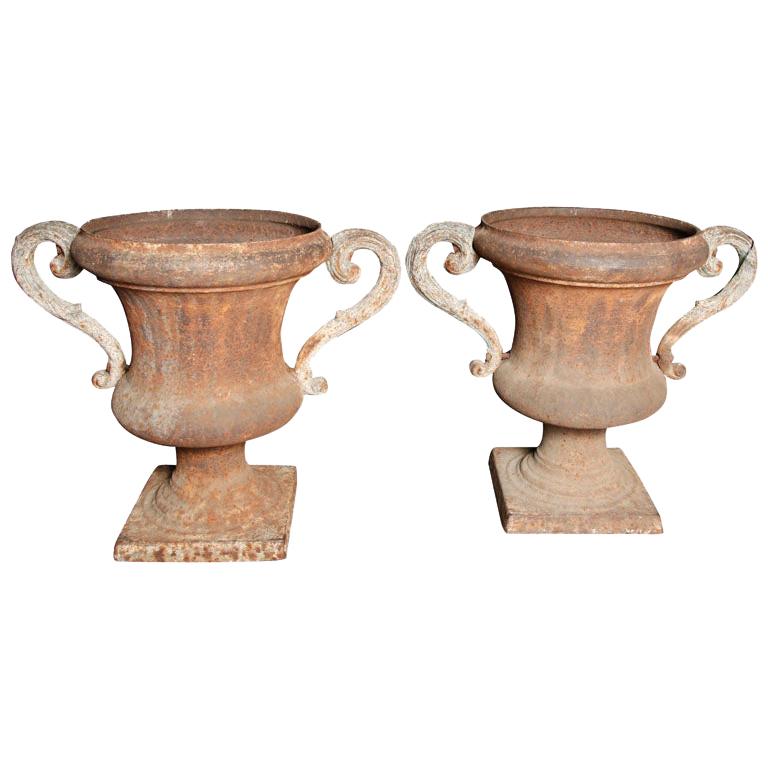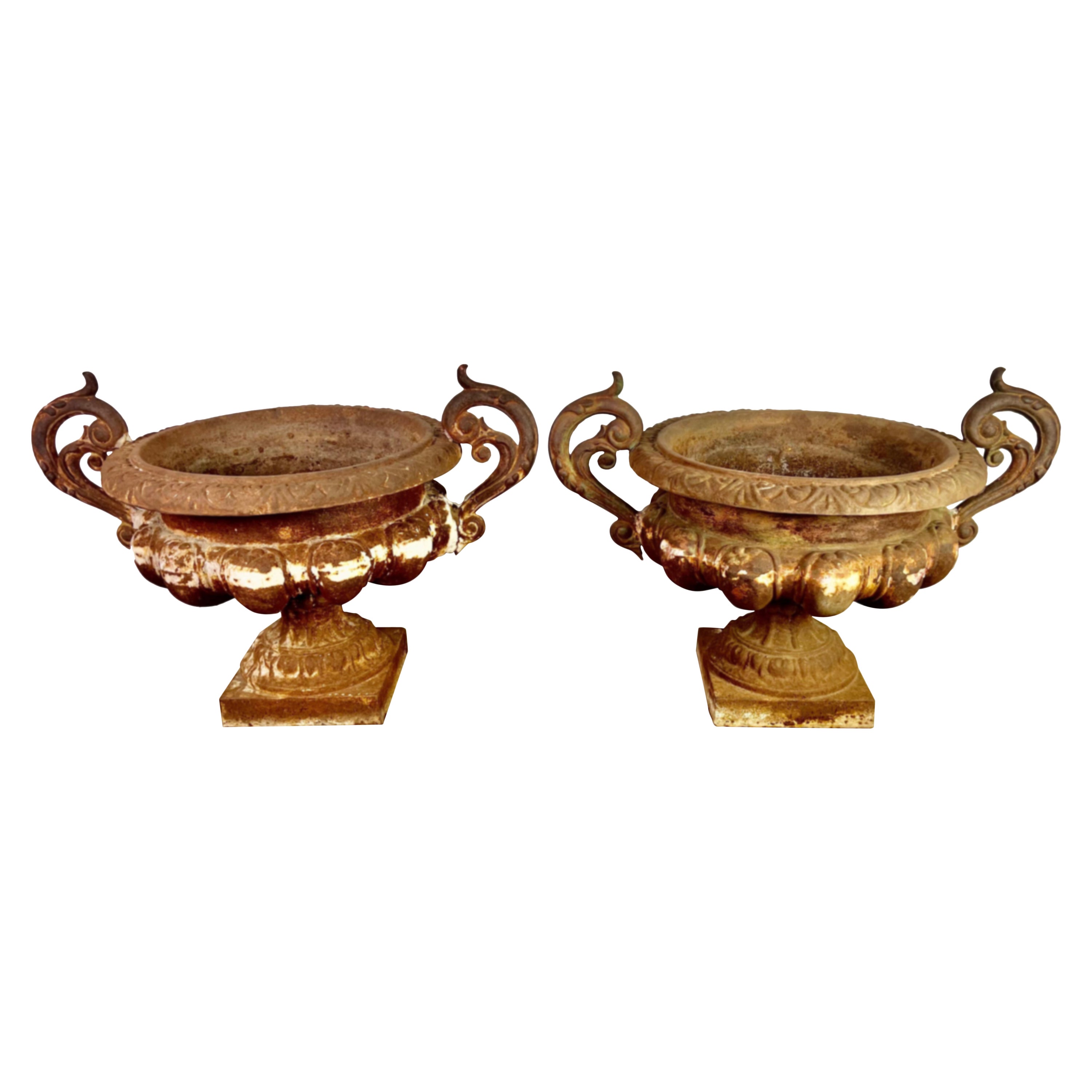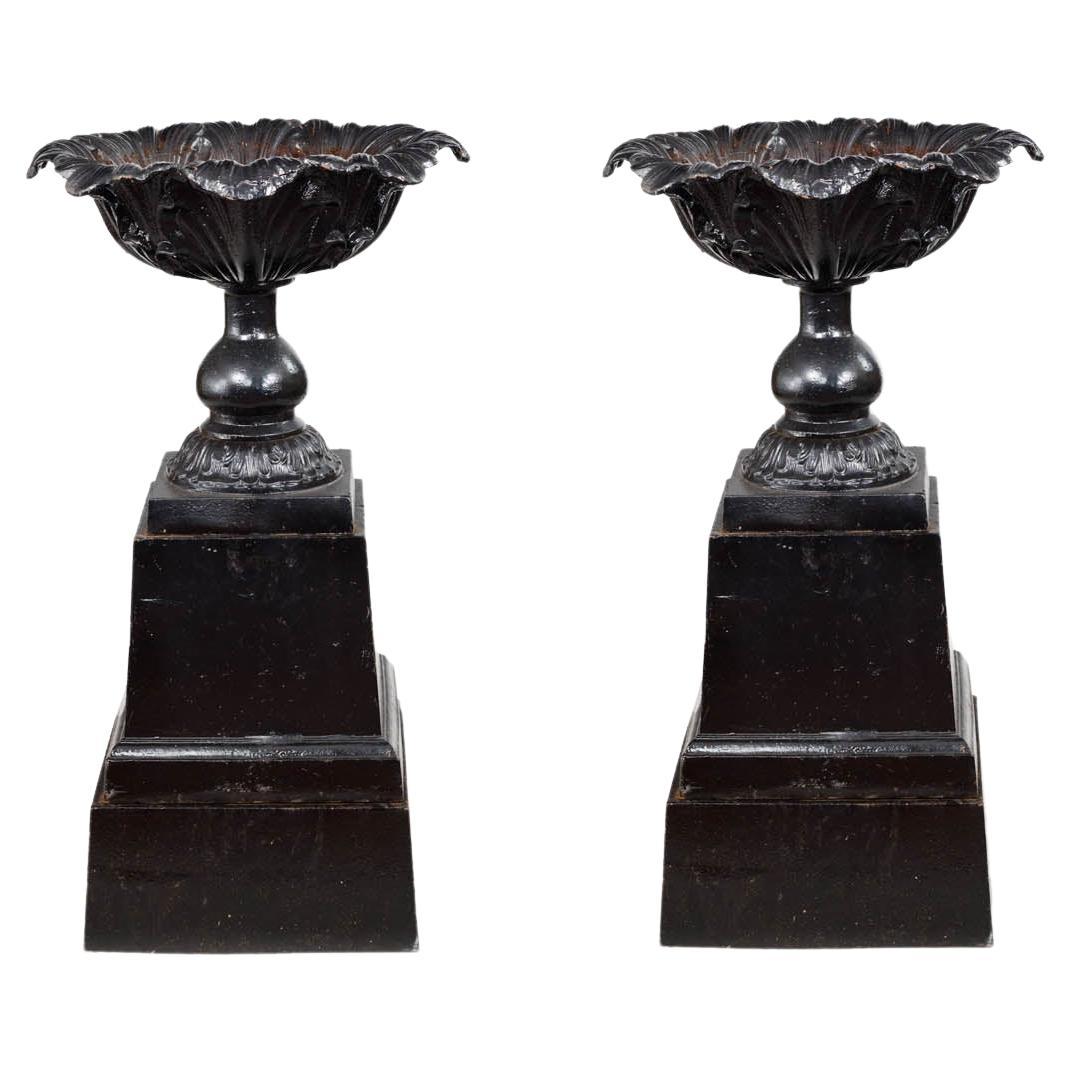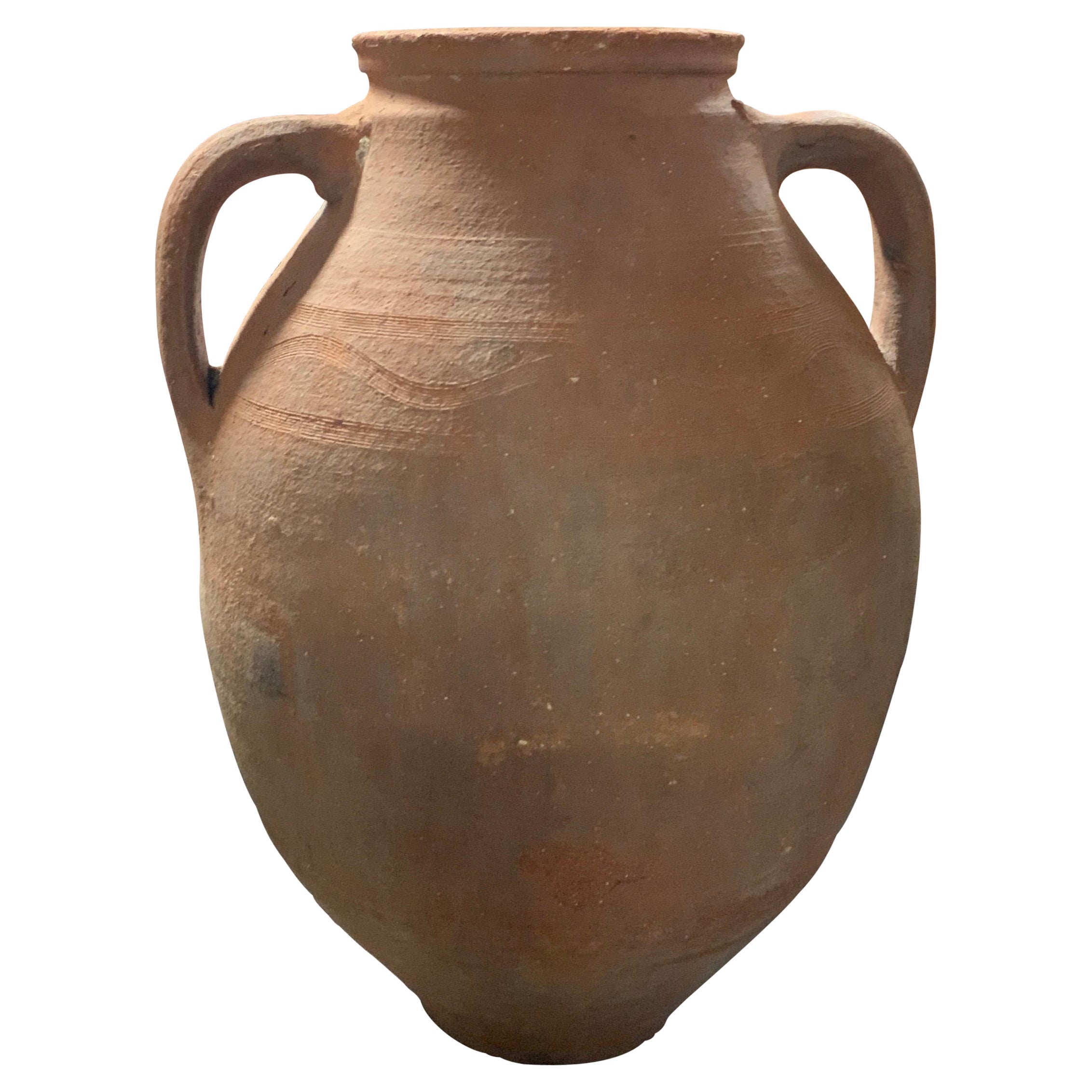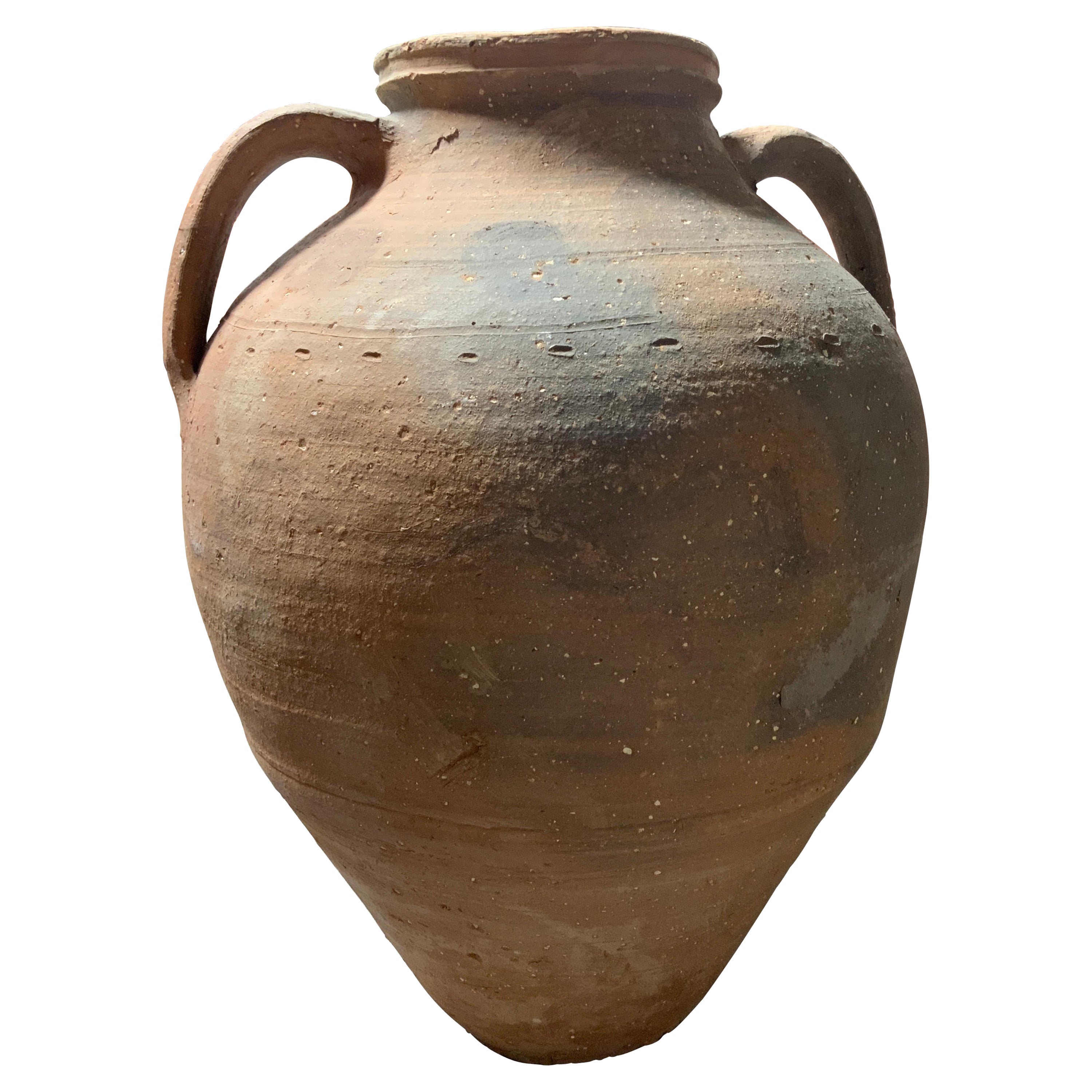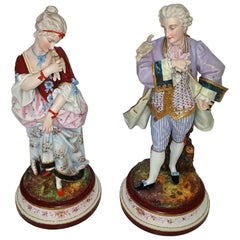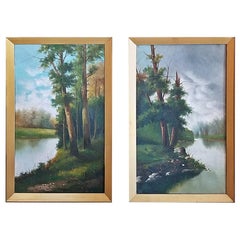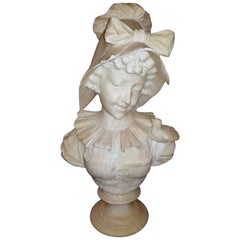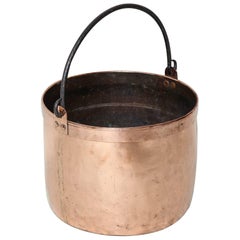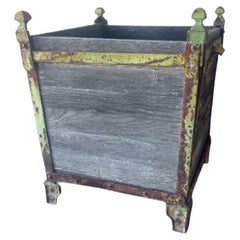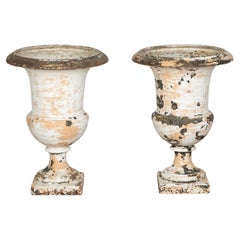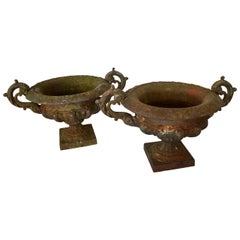
Pair of 19th Century Oak and Iron Banded Water Buckets or Pails
View Similar Items
Want more images or videos?
Request additional images or videos from the seller
1 of 7
Pair of 19th Century Oak and Iron Banded Water Buckets or Pails
Price:$600
About the Item
- Dimensions:Height: 25 in (63.5 cm)Width: 12.25 in (31.12 cm)Depth: 12.25 in (31.12 cm)
- Sold As:Set of 2
- Style:Country (Of the Period)
- Materials and Techniques:
- Place of Origin:
- Period:
- Date of Manufacture:1860
- Condition:Wear consistent with age and use. Minor losses. Minor structural damages. Good condition. Wear consistent with age and purpose.
- Seller Location:Dallas, TX
- Reference Number:1stDibs: LU3978112165763
About the Seller
4.9
Vetted Professional Seller
Every seller passes strict standards for authenticity and reliability
Established in 2015
1stDibs seller since 2018
390 sales on 1stDibs
Authenticity Guarantee
In the unlikely event there’s an issue with an item’s authenticity, contact us within 1 year for a full refund. DetailsMoney-Back Guarantee
If your item is not as described, is damaged in transit, or does not arrive, contact us within 7 days for a full refund. Details24-Hour Cancellation
You have a 24-hour grace period in which to reconsider your purchase, with no questions asked.Vetted Professional Sellers
Our world-class sellers must adhere to strict standards for service and quality, maintaining the integrity of our listings.Price-Match Guarantee
If you find that a seller listed the same item for a lower price elsewhere, we’ll match it.Trusted Global Delivery
Our best-in-class carrier network provides specialized shipping options worldwide, including custom delivery.More From This Seller
View AllPair of 19th Century Limoges Monvoisin Porcelain Figurines
Located in Dallas, TX
Presenting a stunning pair of mid to late 19th century French Limoges Bisque porcelain figurines from circa 1870.
One is of a lady in period dress/attire cradling a Dove. All hand-painted and decorated to the finest quality. The base is marked with the makers initials “C.H.”. She is made of fine bisque porcelain in the Old Paris porcelain style.
The other is of a gentleman set...
Category
Antique 19th Century French Louis XVI Figurative Sculptures
Materials
Porcelain, Paint
19th Century Pair of Polish/German Stoneware Figures
Located in Dallas, TX
Presenting a lovely 19th century pair of Polish/German stoneware figures.
Quite rare!
Not a matching pair but similarly themed, with the little girl holding a basket of kittens with one kitten climbing up her front and the other of a little boy climbing a tree stump with a snail at the base.
The ‘Little Girl’ is painted stoneware or earthenware and we are of the opinion is Polish in origin (or possibly Russian). It does not have any identifiable markings but it was originally with another similar style figurine (not included in this sale) which had markings that we were of the opinion were Polish markings.
The ‘Little Boy’ is painted pottery and we are of the opinion that it is either Polish or German in origin. It is slightly different in style an texture to the girl and has a more ‘bisque’ finish. The facial features are more defined and remind me of German bisque dolls...
Category
Antique Late 19th Century Polish High Victorian Figurative Sculptures
Materials
Pottery
19th Century Pair of British Oils on Canvas of River and Forest Scenes
Located in Dallas, TX
PRESENTING a BEAUTIFUL Pair of classic Original Victorian British Oils on Canvas of River and Forest Scenes.
Unsigned, Oils on Canvas featuring river and forest scenes.
Both in the...
Category
Antique Mid-19th Century English High Victorian Paintings
Materials
Canvas
19th Century French White Alabaster Bust of Lady in Bonnet
Located in Dallas, TX
Presenting a beautiful 19th century French white alabaster bust of lady in Bonnet.
From circa 1880, this bust is gorgeous in it’s detail and subject matter.
Made in probably, Franc...
Category
Antique Late 19th Century French Country Busts
Materials
Alabaster
Rare (Late Medieval) 16th Century German Wrought Iron Oak Chest or Stollentruhe
Located in Dallas, TX
WE HAVE THE PLEASURE TO PRESENT an Exceptionally Rare (Late Medieval) 16th Century German Wrought Iron Oak Chest or Stollentruhe.
This is an Early...
Category
Antique 16th Century German Gothic Blanket Chests
Materials
Wrought Iron
Rare 19th Century English Tunbridgeware Hair Pin or Slide
Located in Dallas, TX
PRESENTING an EXTREMELY UNIQUE and RARE 19C British Tunbridgeware Hair Pin/Bobbin or Slide.
This slide is unlike any of it’s kind we have seen before, it is a VERY RARE survivor.
From circa 1860 – 80 and made in Tunbridge Wells, England.
Made of walnut with gorgeous marquetry inlay on the entirety of the front with classic Tunbridgeware micro-mosaic all over the front. The rear is walnut.
The marquetry inlay appears to be various different woods, namely, maple, walnut and satinwood.
Would have been worn in a Lady’s hair bun with the micro-mosaic facing forward.
This would have belonged to a VERY ELEGANT LADY in the mid to late 19th Century.
Tunbridge ware is a form of decoratively inlaid woodwork, typically in the form of boxes, that is characteristic of Tonbridge and the spa town of Royal Tunbridge Wells in Kent in the 18th and 19th centuries. The decoration typically consists of a mosaic of many very small pieces of different coloured woods that form a pictorial vignette. Shaped rods and slivers of wood were first carefully glued together, then cut into many thin slices of identical pictorial veneer with a fine saw. Elaborately striped and feathered bandings for framing were pre-formed in a similar fashion.
There is a collection of Tunbridge ware in the Tunbridge Wells Museum and Art Gallery in Tunbridge Wells.
The famous makers of Tunbridge ware were in the Tunbridge Wells area of Kent; their most notable work was from circa 1830-1900.
Early makers of Tunbridge ware, in Tunbridge Wells in the mid-18th century, were the Burrows family, and Fenner and Co. In the 19th century, around 1830, James Burrows invented a technique of creating mosaics from wooden tesserae. Henry Hollamby, apprenticed to the Burrows family, set up on his own in 1842 and became an important manufacturer of Tunbridge ware, employing about 40 people.
Edmund Nye (1797–1863) and his father took over the Fenner company when William Fenner retired in 1840, after 30 years in partnership with him. Thomas Barton (1819–1903), previously apprenticed at the Wise factory, joined the Nyes in 1836, and worked as Nye’s designer; he took over the business in 1863 and continued there until his death.
In Tonbridge (near to Tunbridge Wells), George Wise (1703–1779) is known to have had a business in 1746. It continued with his son Thomas, and Thomas’s nephew George (1779–1869), who took over in 1806. In its early years the company made articles such as workboxes and tea caddies with prints of popular views; later items had pictures created from mosaics. Their workshop in Tonbridge, Wise’s Tunbridge Ware Manufactory, was next to the Big Bridge over the Medway; the building was demolished in 1886 to widen the approach to the bridge.
Tunbridge ware became popular with visitors to the spa town of Tunbridge Wells, who bought them as souvenirs and gifts. Articles included cribbage boards, paperweights, writing slopes, snuffboxes and glove boxes.
At the Great Exhibition of 1851, Tunbridge ware by Edmund Nye, Robert Russell and Henry Hollamby was shown; Edmund Nye received a commendation from the judges for his work. He exhibited a table depicting a mosaic of a ship at sea; 110,800 tesserae were used in making the picture.
The manufacturers of Tunbridge ware were cottage industries, and they were no more than nine in Tunbridge Wells and one in Tonbridge. The number declined in the 1880s; competent craftsmen were hard to find, and public tastes changed. After the death of Thomas Barton in 1903 the only surviving firm was Boyce, Brown and Kemp, which closed in 1927.
Marquetry was an old technique which was continued by Nye and Barton to create images such as birds or butterflies.
‘Green Oak’ as caused by the fungus Chlorociboria aeruginascens.
Stickware and half-square mosaic was invented by James Burrows in about 1830: a bunch of wooden sticks of different colours, each having triangular or diamond-shaped cross section, were tightly glued together; in the case of stickware, the resulting block was dried, then turned to form an article such as the base of a pincushion. For half-square mosaic, thin slices were taken from the composite block, and applied to a surface.
Tesselated mosaic, was a development by James Burrows of half-square mosaic; it was adopted by George Wise and Edmund Nye. Minute tesserae were used to form a wide variety of geometric and pictorial designs.
Many sorts of wood were used for the various colours; about 40 were in regular use. Only natural colors were used; green was provided by “green oak”, produced by the action of fungus on fallen oak. Designs for articles were often taken from designs of Berlin wool work.
Category
Antique Late 19th Century English High Victorian Collectible Jewelry
Materials
Satinwood, Walnut
You May Also Like
19th Century Copper Bucket
Located in Greenwich, CT
Good 19th century copper pot with rolled lip, wrought iron handle, the dovetailed seam having brass solder, the whole with great scale and ideal si...
Category
Antique 1860s European Country Fireplace Tools and Chimney Pots
Materials
Copper
Pair of Oak & Iron Planters, 19th Century, GE-0111
Located in Scottsdale, AZ
Pair of oak & iron planters, 19th century.
Item #: GE-0111
Additional information:
- Material: Oak, iron
- Dimensions: 29”H x 23,5”SQ.
Category
Antique 19th Century European Planters and Jardinieres
Materials
Iron
Pair of 19th Century French Cast Iron Urns
Located in Gloucestershire, GB
Lovely pair of early 19th Century French cast iron urns with nice old weathered paint.
These will look good indoors as well as in the garden.
Circa 1850.
Category
Antique Mid-19th Century French Country Planters and Jardinieres
Materials
Iron
$4,402 / set
Pair of 19th Century French Cast Iron Planters or Urns
Located in Copenhagen, K
Beautiful pair of French cast iron urns. Shades of original leftover paint.
Category
Antique Late 19th Century French Belle Époque Planters and Jardinieres
Materials
Iron
$1,400 Sale Price / set
50% Off
Pair of 19th Century Cast Iron Planters
Located in Cheshire, GB
Pair of 19th Century cast iron planters of oblong form, with handles above fluted scrolling decorated sides raised up on stepped bases....
Category
Antique Late 19th Century British Planters and Jardinieres
Materials
Iron
$2,059 Sale Price
53% Off
Pair of 19th Century Cast Iron Planters
Located in High Point, NC
Pair of 19th century cast iron planters from England. The planters are highly decorated with floral swags over reeding, which accentuates the lovely shape of the planters. The hand...
Category
Antique 19th Century English Planters and Jardinieres
Materials
Iron
$3,600 / set
Recently Viewed
View AllMore Ways To Browse
Primitive Bucket
Antique Primitive Painted Furniture Primitives
Antique Primitive Folk Art
Antique Primitive Original Paint
Primitive Pennsylvania
18th Century Primitive American Furniture
Primitive Bucket
American Primitive Black Folk Art
Primitive Pantry
Antique Firkin
Painted Firkin
Antique Firkin Bucket
Antique Painted Firkins
Firkin Bucket
Primitive Fork
Folk Art Whimsy Chain
Cast Iron Cow Door Stop
Antique 19th Century Christening Gown
